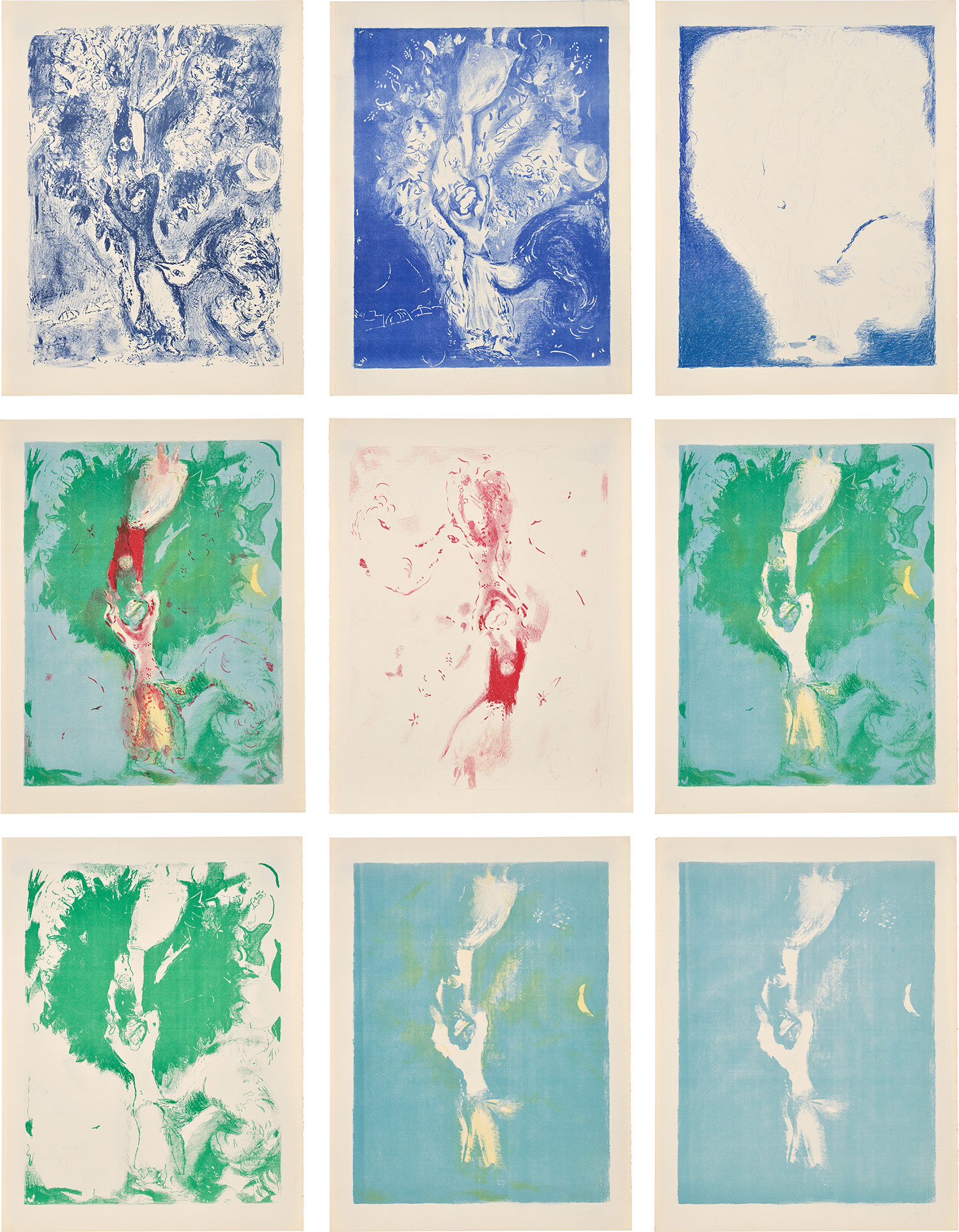

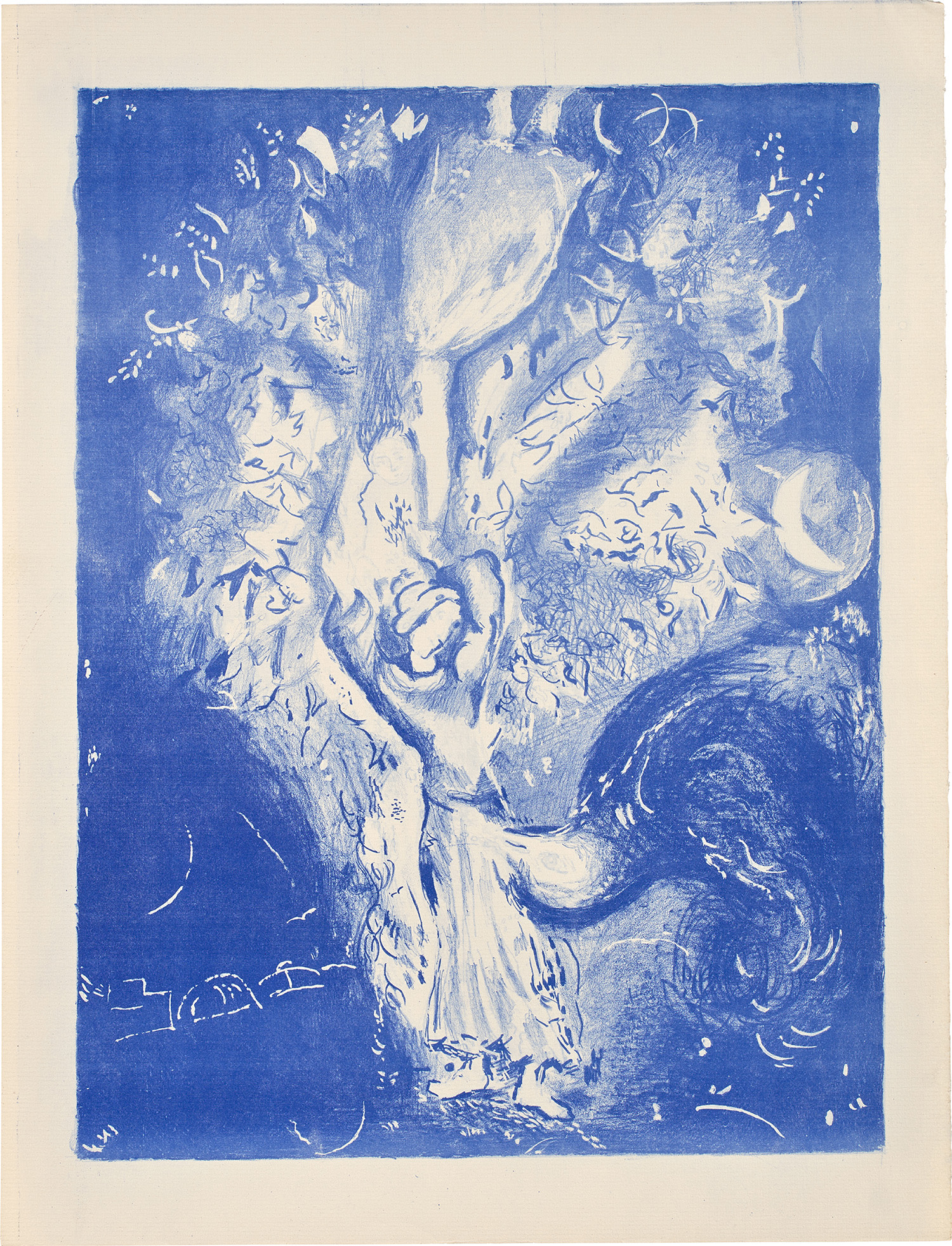
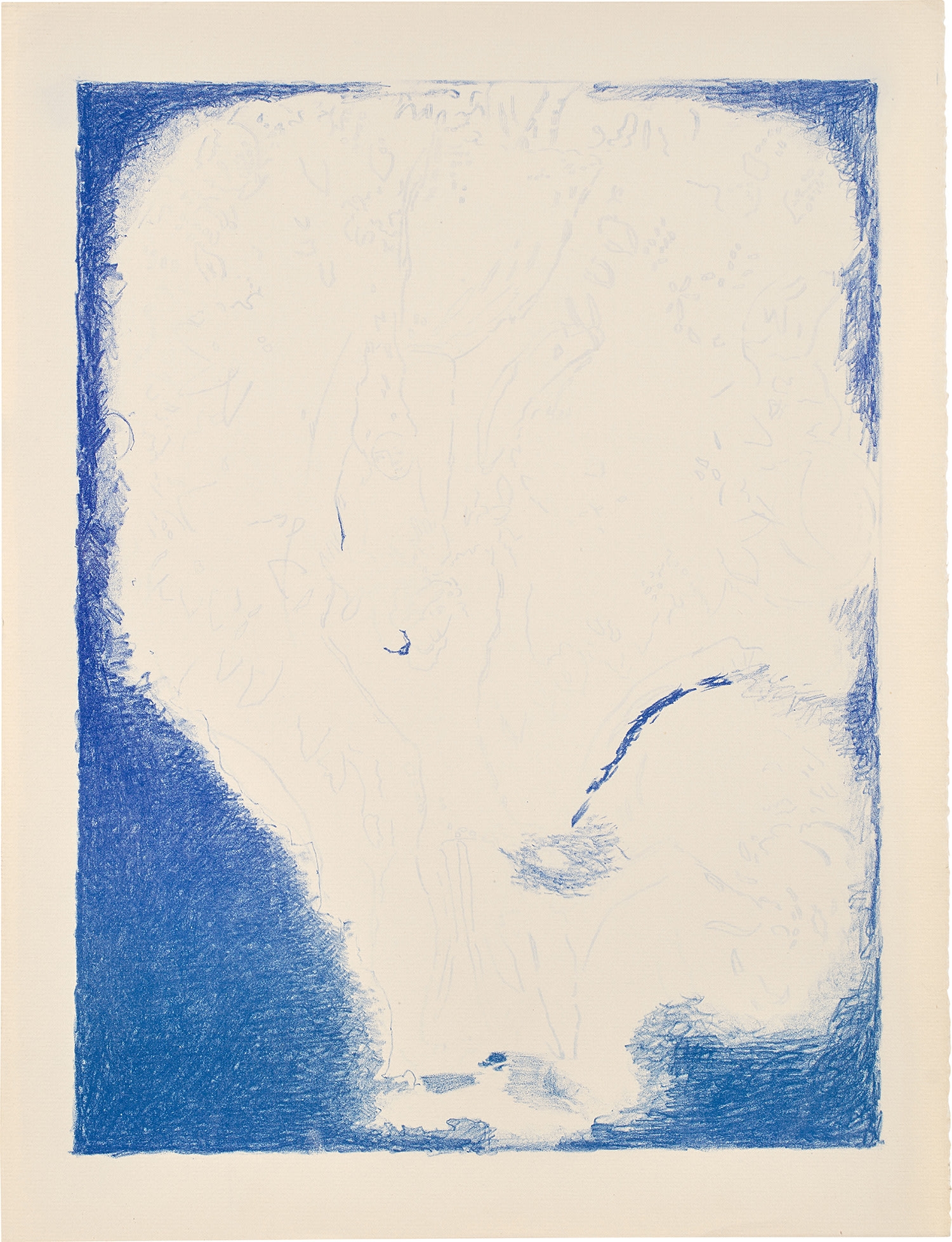
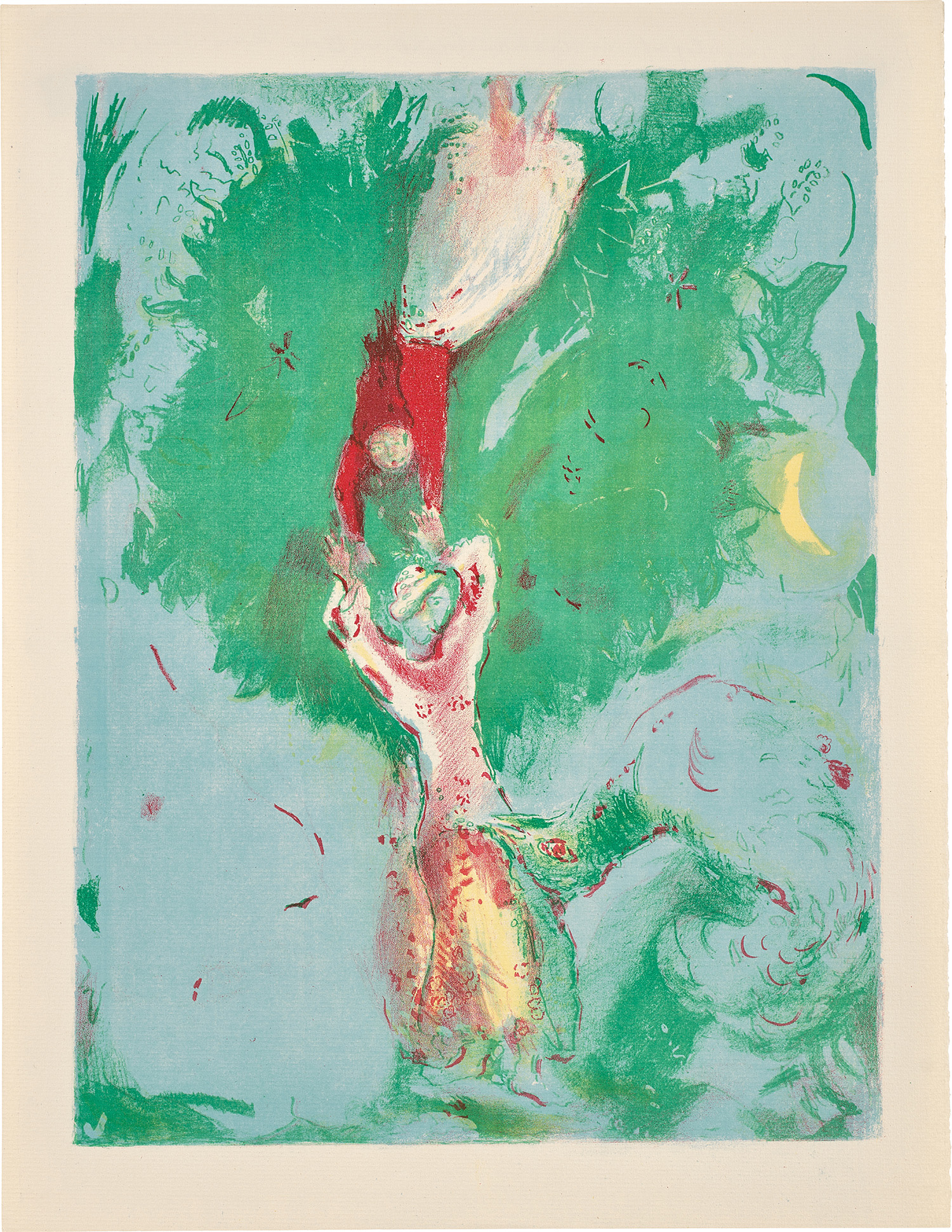

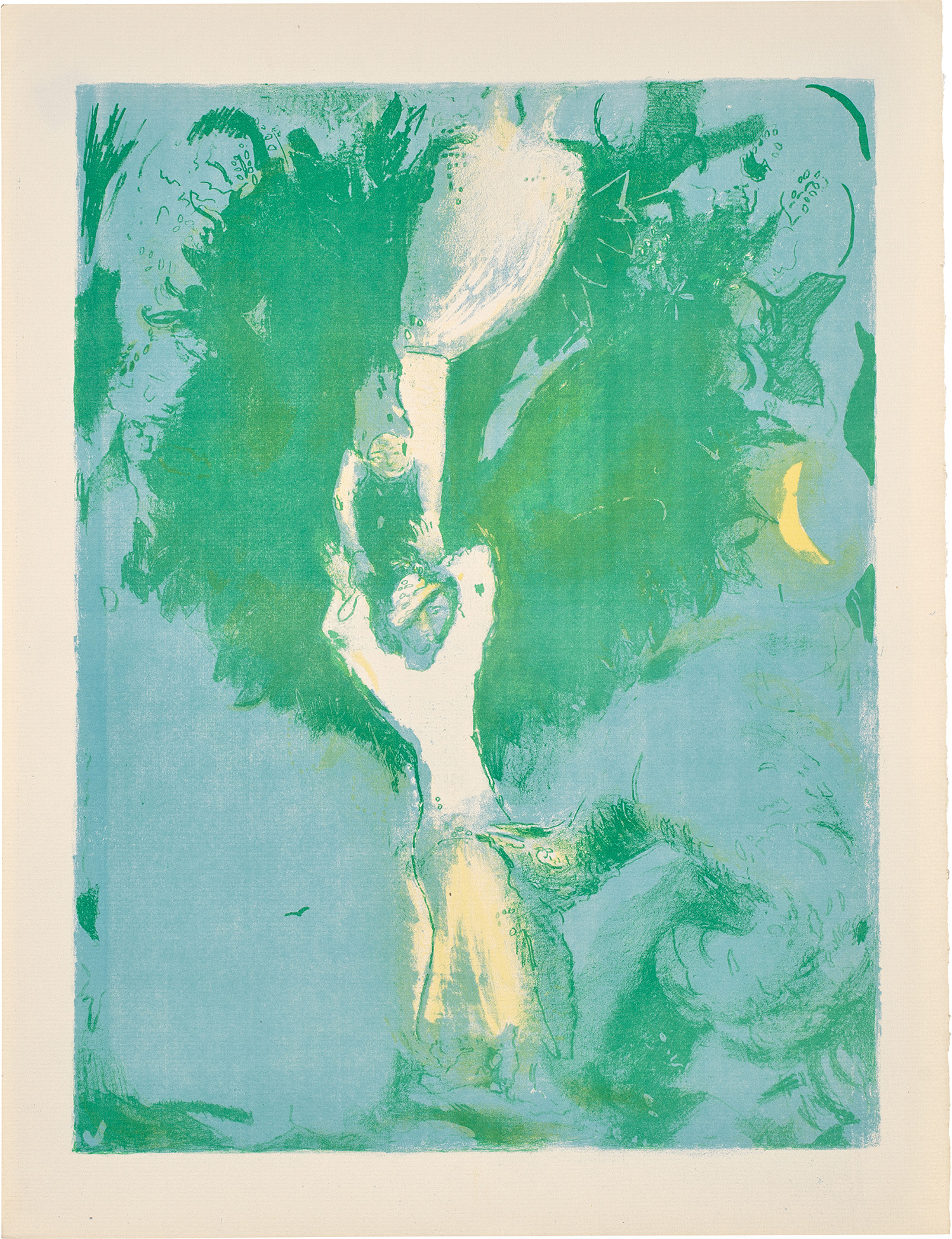

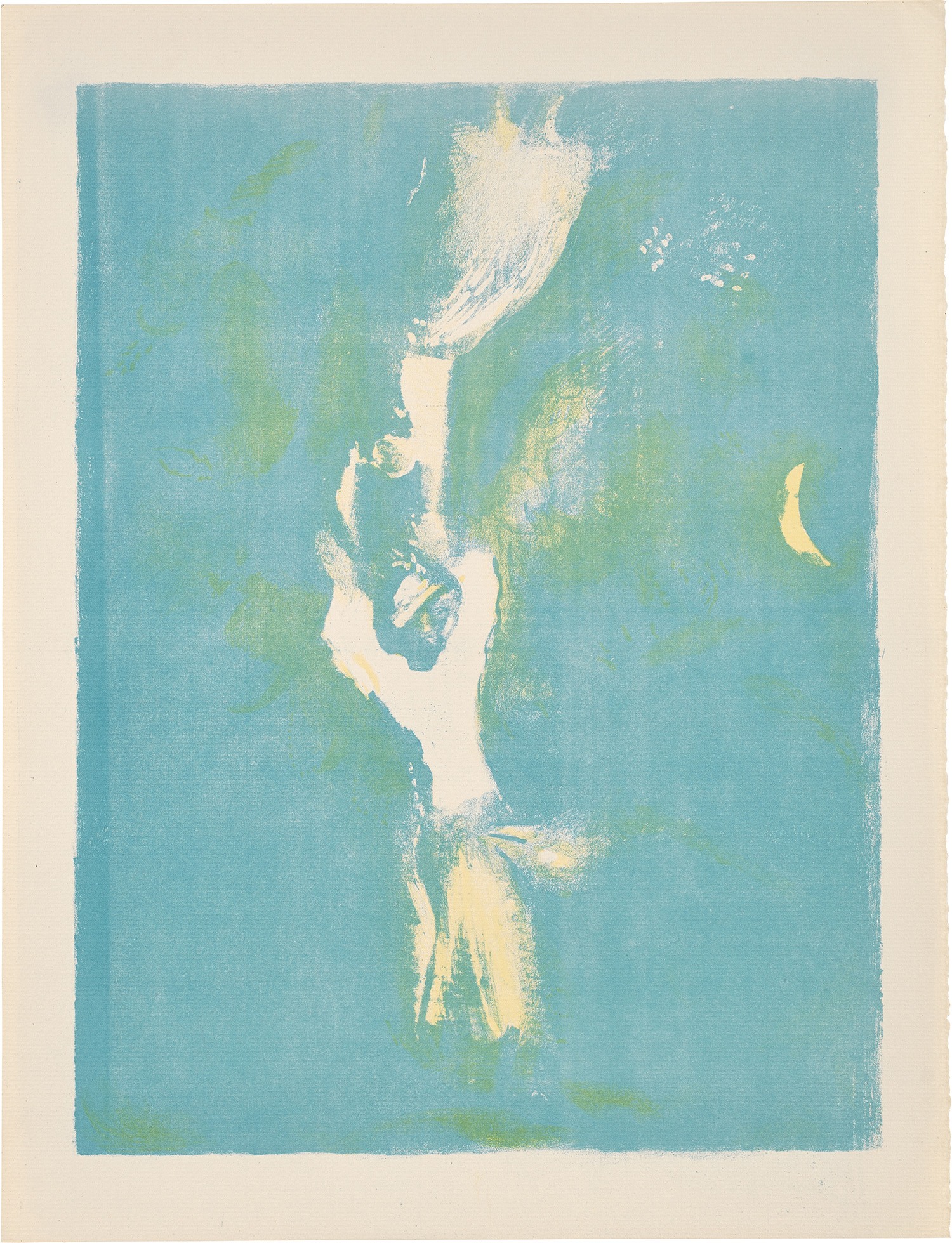
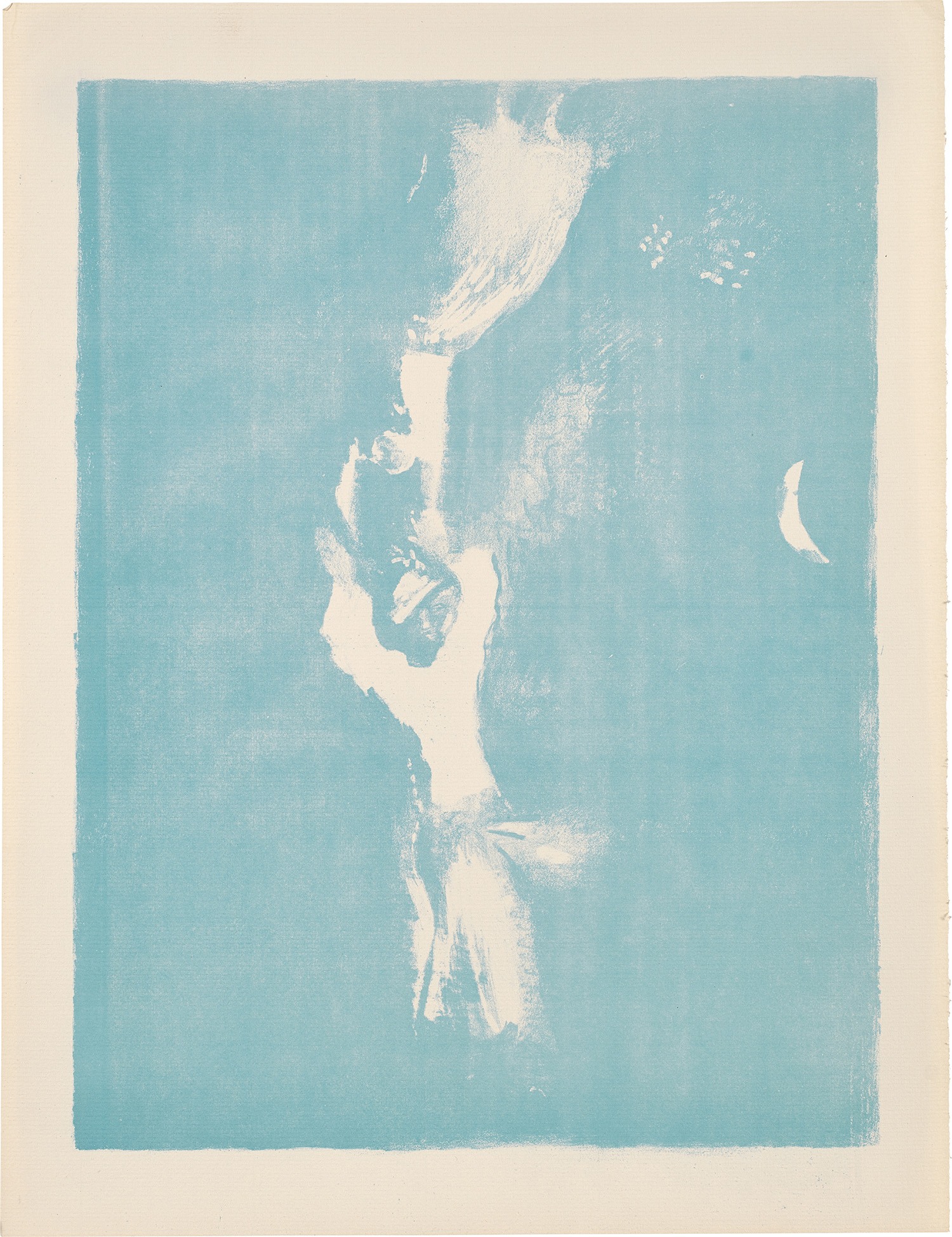
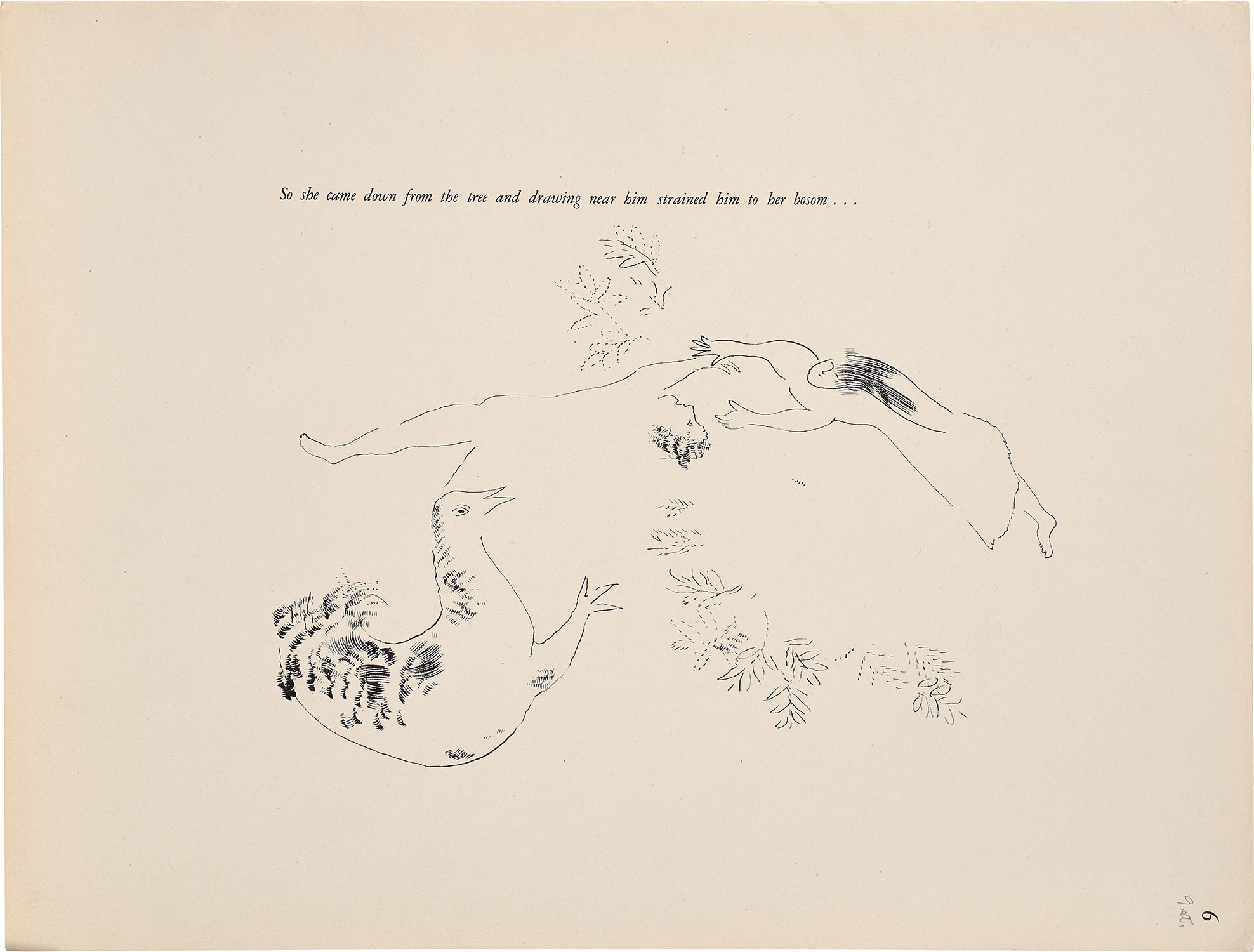











132
Marc Chagall
So she came down from the tree and drawing near him strained him to her bosom...: plate 6, from Four Tales from the Arabian Nights: nine plates (M. 41, see C. bks 18)
1948
Nine lithographs, color progressive proofs, in colors, on Utopian laid paper, with full margins, all contained in the original wove paper folio with lithograph illustration, folded (as issued).
all I. 14 5/8 x 11 in. (37.1 x 27.9 cm)
all S. 17 x 13 in. (43.2 x 33 cm)
all S. 17 x 13 in. (43.2 x 33 cm)
Unsigned (as issued), printed to accompany the final state deluxe edition of 10 in Roman numerals (there was also a final state edition of 90 in Arabic numerals and 11 lettered A-K), published by Pantheon Books, New York, printed by Albert Carman, City Island, New York, all unframed.
Full-Cataloguing
Chagall wanted his renderings of these evocative stories to match their beautiful literary descriptions and thus, he decided upon color lithography as the medium that would best translate these narratives to the printer’s press. The versatile printing technique of lithography would allow Chagall to seamlessly integrate his signature painting style of loose brushwork, deep colors, and rich layering of each color from separate plates to the world of his printmaking. However, it would take nearly 20 years for this series to come to fruition as it was not until he found asylum in the United States at the invitation of the Museum of Modern Art during World War II that he found the proper collaboration to illustrate the texts. The result was a portfolio of thirteen elaborate images entitled Four Tales from the Arabian Nights, published in 1948 by Jacques Schiffrin for Pantheon Books.
In 1704, Antoine Galland, a French orientalist, published the first European translation of the tales of Arabian Nights and is accredited with their popularization across Europe and the further influence of Arabian stories on European fairytales. Marc Chagall first considered illustrating the tales of Arabian Nights in the 1920s at the suggestion of Ambroise Vollard, one of the most prominent art dealers and publishers of early twentieth century French art. Of the hundreds of stories, Chagall carefully chose only four to illustrate: The Ebony Horse, Julnar the Sea-Born and her Son King Badr Basim of Persia, Abdullah the Fisherman and Abdullah the Merman, and Kamar Al-Zaman and the Jeweller’s Wife.
The many tales of Arabian Nights explore themes of love and betrayal, destiny and adventure, fantasy and horror, all augmented by incredibly descriptive narratives that conjure up magnificent and colorful imagery. The tales revolve around the central story between King Shahryar, a scorned man intent on revenge, and Shahrazad, an imprisoned woman who shares a tale with the King each evening. After a thousand and one tales, King Shahryar falls in love with Shahrazad and makes her his queen.
In all, Chagall created 12 different images illustrating the four tales. He printed them in editions of 90, 11 and 10. The edition of 10 was made special by Chagall to include a sheet of each different color printed on its own or in combination - probably to show how a multi-color lithograph is made and the amount of work involved to get to the final image. This lot contains impressions from the rare color progressive proofs which make up the final image. Lots 3, 4 and 5 are examples of the final signed and numbered, full color, states.
In 1704, Antoine Galland, a French orientalist, published the first European translation of the tales of Arabian Nights and is accredited with their popularization across Europe and the further influence of Arabian stories on European fairytales. Marc Chagall first considered illustrating the tales of Arabian Nights in the 1920s at the suggestion of Ambroise Vollard, one of the most prominent art dealers and publishers of early twentieth century French art. Of the hundreds of stories, Chagall carefully chose only four to illustrate: The Ebony Horse, Julnar the Sea-Born and her Son King Badr Basim of Persia, Abdullah the Fisherman and Abdullah the Merman, and Kamar Al-Zaman and the Jeweller’s Wife.
The many tales of Arabian Nights explore themes of love and betrayal, destiny and adventure, fantasy and horror, all augmented by incredibly descriptive narratives that conjure up magnificent and colorful imagery. The tales revolve around the central story between King Shahryar, a scorned man intent on revenge, and Shahrazad, an imprisoned woman who shares a tale with the King each evening. After a thousand and one tales, King Shahryar falls in love with Shahrazad and makes her his queen.
In all, Chagall created 12 different images illustrating the four tales. He printed them in editions of 90, 11 and 10. The edition of 10 was made special by Chagall to include a sheet of each different color printed on its own or in combination - probably to show how a multi-color lithograph is made and the amount of work involved to get to the final image. This lot contains impressions from the rare color progressive proofs which make up the final image. Lots 3, 4 and 5 are examples of the final signed and numbered, full color, states.